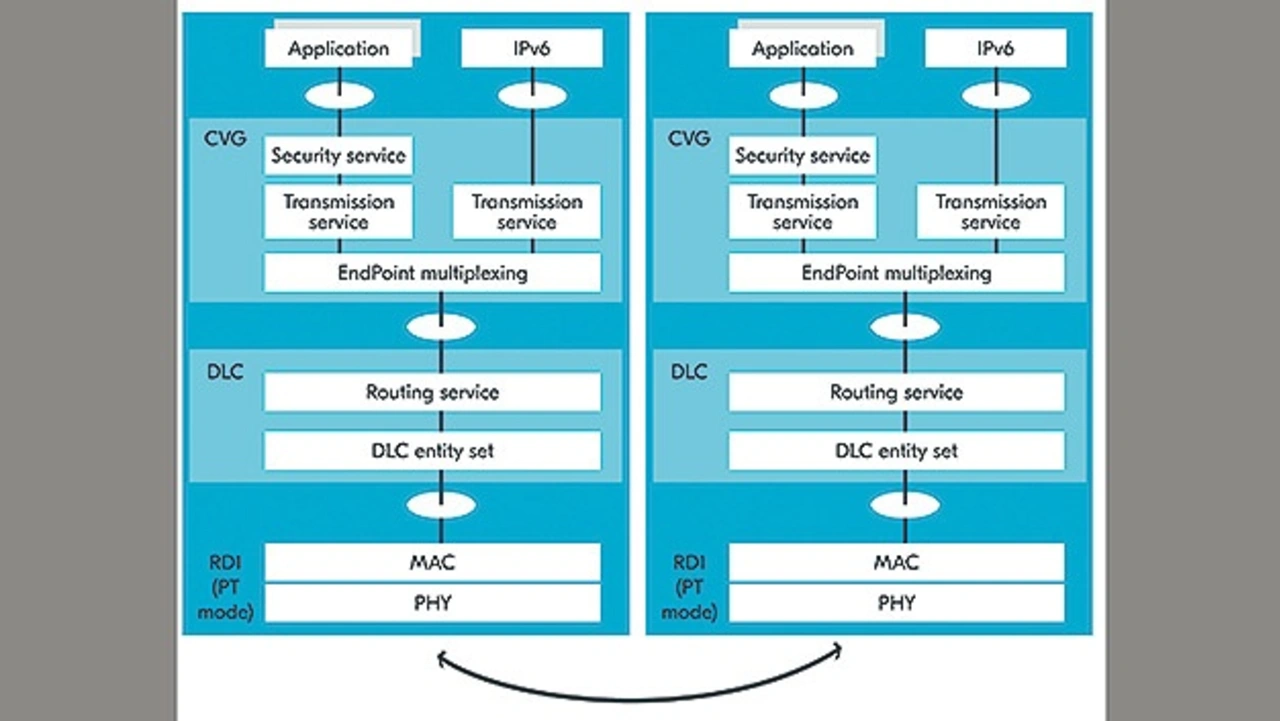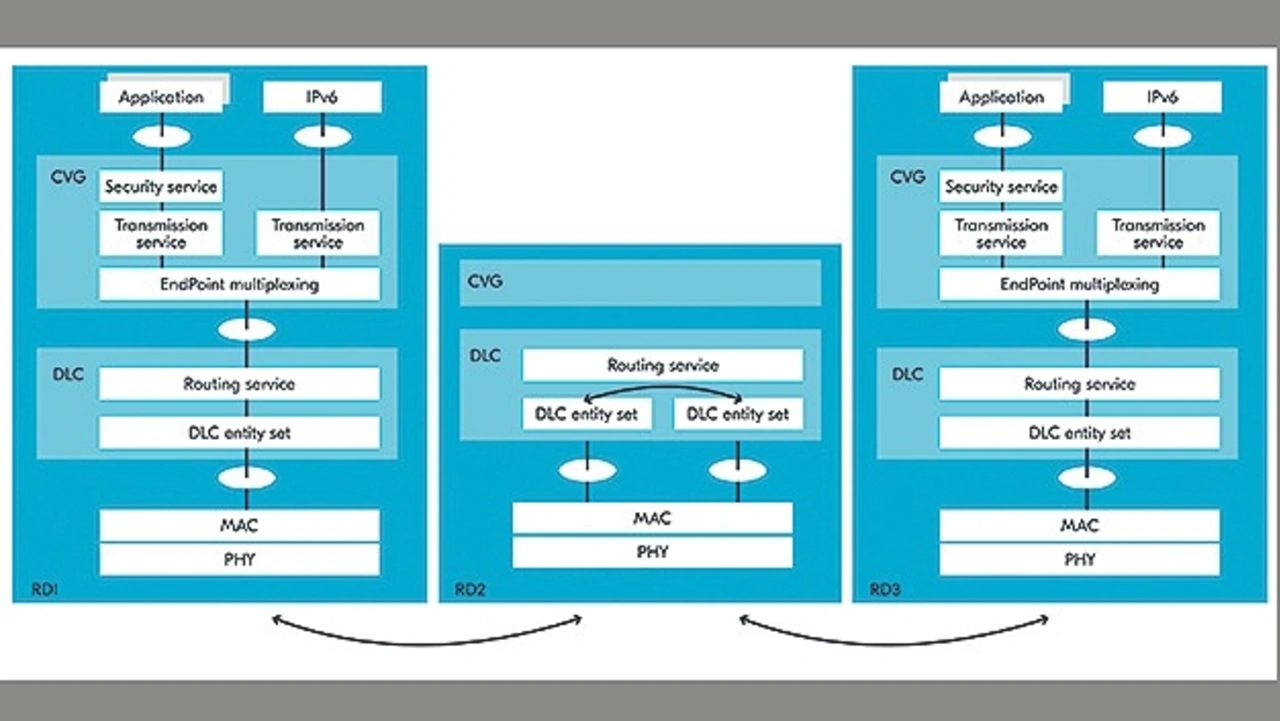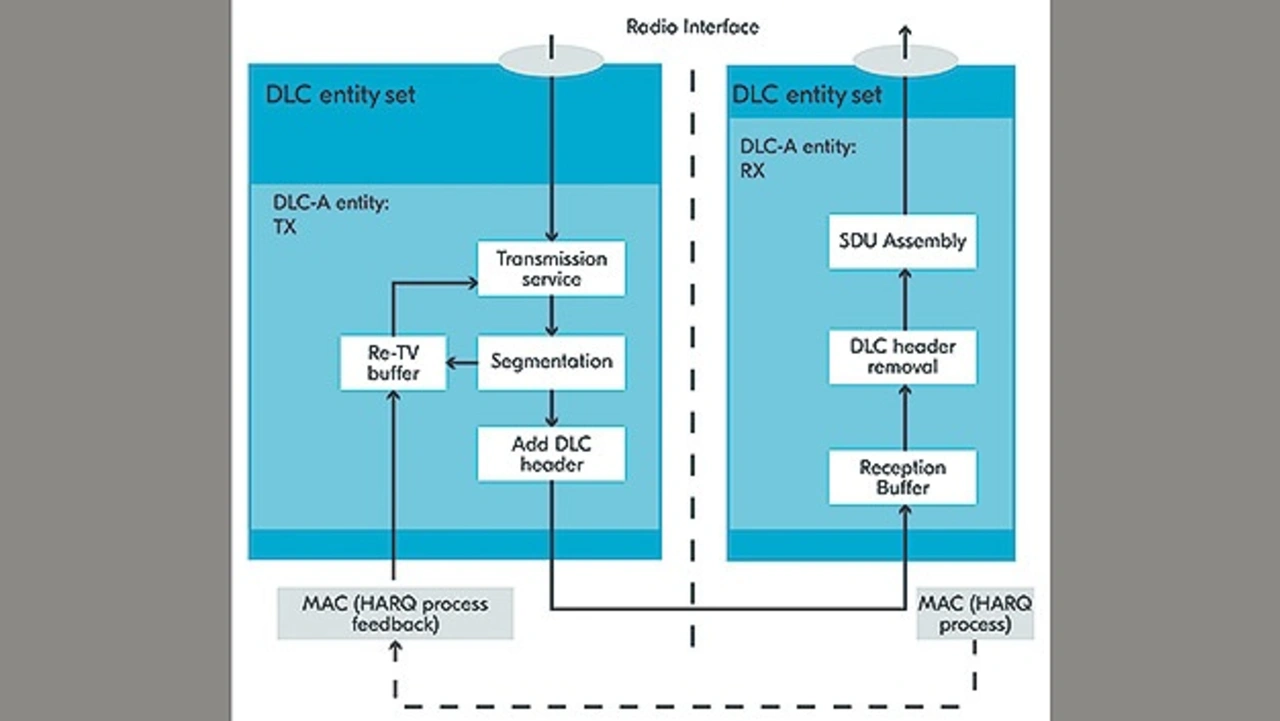License-free frequency band for 5G
Could DECT-2020 democratize massive IoT in 5G?
Fortsetzung des Artikels von Teil 4
Data Link Control Layer and Convergence Layer

The Data Link Control (DLC) and Convergence (CVG) layers support a flexible system architecture, whereby the DLC layer provides the necessary segmentation and packet routing functions for the MAC layer, and the convergence layer provides adaptation functions between application layer protocols and DECT-2020 radio interface.
The following figure 4 illustrates a DECT-2020 architecture overview of a point-to-point or star topology.
The next figure 5 depicts protocol architecture exploiting mesh topology and routing with IPv6 and non-IPv6 applications. The centermost node receives and forwards the packets to the edge node with backbone connection. As such, the packet routing resides at the DLC layer.

The DLC Layer can operate in three different service modes based on QoS and application data format requirements. The service modes are Transparent Mode, Segmentation Mode and DLC ARQ Mode. Transparent Mode is exactly as its name defines, transparent to the convergence layer, thus the packet data needs to be appropriately sized for MAC SDUs. In Segmentation Mode, the DLC SDU is segmented into suitable-sized packets for independent transmissions over MAC, and at the other end assembled into full DLC SDUs.
DLC ARQ Mode, depicted in Figure 6, is a further enhancement of the segmentation mode, where the Hybrid ARQ mechanism of the MAC layer is uniquely used for signaling the retransmission requirement of individual DLC segments rather than a complete DLC SDU.

Packet routing handles complete DLC SDUs. The packet routing to backend (uplink) is based on clustered tree routing topology. When a node sends data to the backend it uses a specific backend address (0xFFFFFFFE) as the destination address. The packet routing from backend (downlink) is based on selective flooding in a clustered ‘tree’. Packet routing between nodes in a clustered tree topology uses selective hop-limited flooding, where a node transmits data to a destination only if there is an established association between the nodes. And the node itself is the destination of the packet. Otherwise, data is flooded into the radio neighborhood with limited hop count.
Finally, a convergence layer provides an endpoint multiplexing service, transmission service with segmentation and reassembly, retransmission, flow control, lifetime control, duplicate removal, delivery order service, and a security service with ciphering and integrity protection. The convergence layer operates end-to-end between terminal entities, and intermediate nodes in the mesh network do not process the convergence layer payload as depicted in Figure 5.
- Could DECT-2020 democratize massive IoT in 5G?
- So what is DECT-2020?
- Physical Layer
- Medium Access Control
- Data Link Control Layer and Convergence Layer
- Why DECT-2020 is the missing wireless IoT technology








